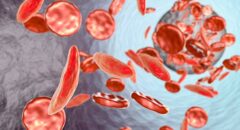
While Iron deficiency anemia doesn’t enjoy the celebrity status of prominent diseases like cancer or COVID, this condition is a monster in its own right. Or what would you say of an illness which 5 million Americans have?
But wait, what really is iron deficiency anemia?
As the name suggests, iron deficiency anemia is a type of anemia where the patient experiences an insufficiency of iron. Such mineral dearth of iron slashes the number of red blood cells in that individual.
The said iron deficiency handicaps hemoglobin production. The latter is critical to transporting oxygen around the body. With such impairment in oxygen distribution, the individual experiences prolonged and unexplained fatigue and increased irritableness.
Iron deficiency is commonplace in America. How ridiculous is it that in a land of culinary abundance like the United States, about 10 million people are iron deficient?
The good news is the solution to iron deficiency anemia is quite simple: eat more iron! In this guide, I will take you through five enjoyable iron-rich foods that will send anemia packing.
1. Get the eggs and organ meat
Animal proteins like eggs are enormous banks of iron. One egg typically packs about 1.89mg of iron. Organ meats like giblets and liver also have a wealthy iron supply.
Take chicken giblets, for example. 6.1mg iron is accruable from 113gram of chicken giblet. You can also source substantial quantities of iron from liver.
Just an ounce of pork liver can enrich you with as much as 6.61mg of iron. Nonetheless, we must acknowledge that liver is not suitable for pregnant women or people with high cholesterol.
Specifically, research is uncovering the connection between liver consumption in pregnant women and congenital disabilities. On the cholesterol side, one ounce of liver alarmingly contains more than 85mg of cholesterol.
2. Munch the dark leafy greens
Dark green leafy vegetables are remarkable reservoirs of iron. One of the most prominent leafy greens when sourcing iron is spinach. You get as much as 2.7mg of iron in 3.5 ounces of spinach.
Aside from spinach, other leafy greens like kale, Swiss chard, and collard greens richly supply iron. Should you not fancy taking these greens as salads, you can work them into delicious chicken wraps or even kale chips.
3. Of course, you can have chickpeas
When we talk about iron-rich foods, the first cluster that often comes to mind is animal protein. Chickpea is one plant-based iron source that disrupts this status quo.
Chickpeas are some of the richest iron-laden foods among legumes. A cup of chickpea (USDA standard) can fetch you a gargantuan 37mg of iron.
There is a broad spectrum of possibilities when it comes to integrating chickpeas into your meal plans. You can add them to your pasta or salad.
Definitely, I don’t expect everyone to fancy texture foods. For this fraternity, puree chickpeas are still great alternatives when seeking your iron-rich hummus at home.
As we will be learning down the guide, you can supplement your chickpea dishes with lemon juice to amplify the amount of iron your body derives from the chickpeas.
4. Oysters, anyone?
If there are fellow fanatic seafood lovers in the house, we can have some mouthwatering oysters. How thrilling is it that just 5 raw oysters can lavish you with 3.23mg of iron?
However, caution is needed when consuming oysters raw, especially with the prevalence of low-quality oyster vendors in the market today.
Cooking is always the safer way to eat these marine beauties.
You can integrate cooked oysters into your pasta dishes.
There are also yummy alternatives of dishing cooked oysters in broil and bread crumbs or alongside fresh herbs. It is common knowledge oysters can be added to your stew.
Like oysters, other saltwater Bivalve mollusks like mussels and clams are packed with vital nutrients like iron. Oysters are also rich in zinc, copper, manganese, protein, and calories.
5. Don’t neglect your beans
Aside from chickpeas, beans are iron-spoiled legumes you can resort to when fighting iron deficiency. It is so easy to add beans to your diet.
You can add your bean to your pasta, either as tomato sauce or your pesto pasta. You can easily stir your beans into soup, top your salad with beans, or my preferred way of baking them into a desert.
While these five foods are outstanding at ramping up your iron supply, you can make their job easier by supplementing them with specialized Vitamin C-containing foods to aid iron absorption.
Taking foods rich in Vitamin C like orange juice, grapefruit, melons, oranges, tomatoes, tangerines, and strawberries increases the iron content your body extracts from the above five foods. Bon appétit!








